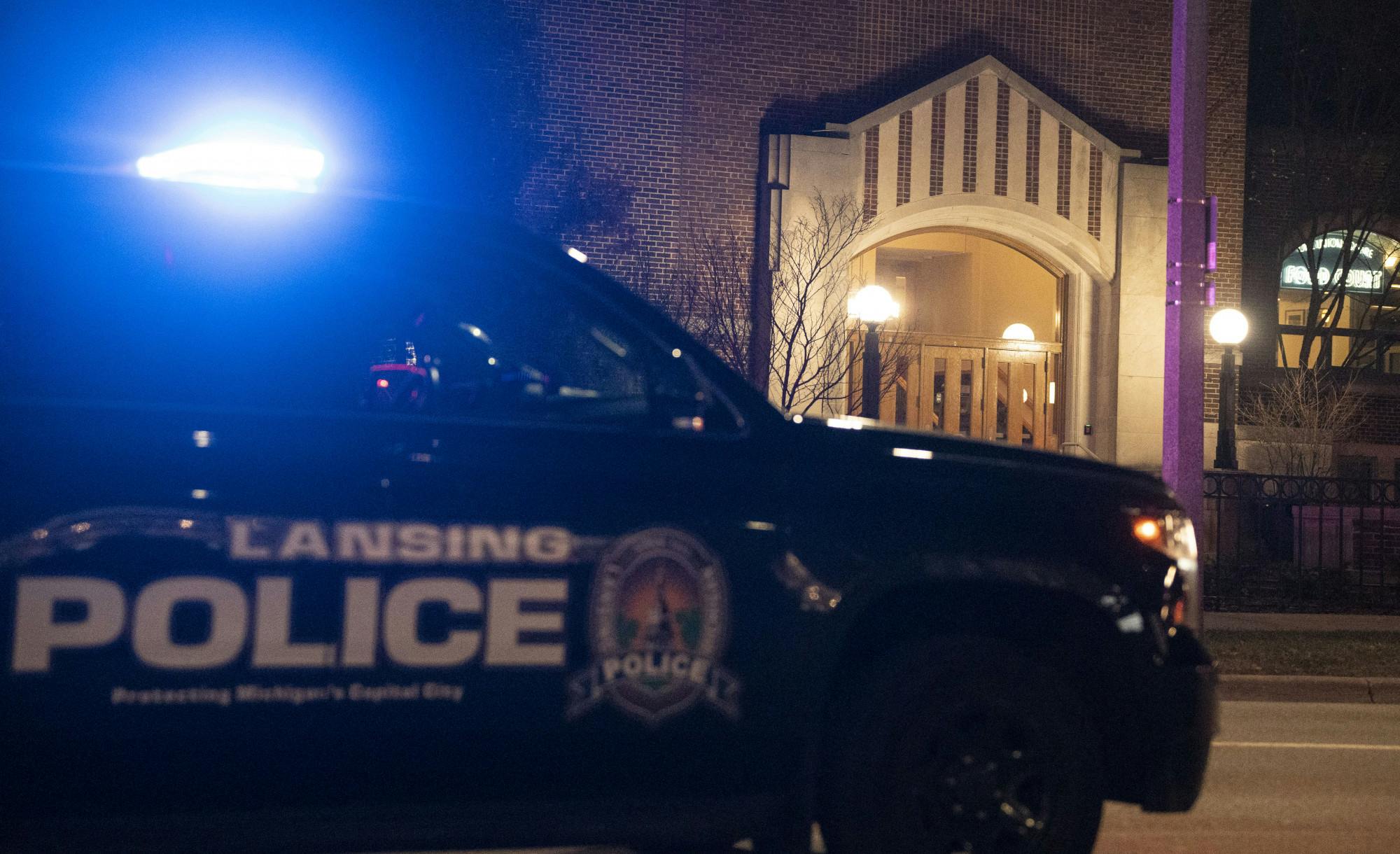With the release of investigation updates of the shooting that took place on Feb. 13 by the Michigan State University Department of Police and Public Safety, or DPPS, MSU Chief of Police Chris Rozman said some of the calls reporting the shooter’s location on the night of the shooting could not be verified until after the incident.
According to the release, the 9:14 p.m. timestamp places a person seen matching the suspect description on Harrison Road and Grand River Avenue. Along with several other timestamps, the 9:14 p.m. was learned about throughout the course of the investigation and were unknown by law enforcement the night of the shooting.
Rozman said misinformation at the time of the shooting, particularly some of the calls reporting the shooter’s location made by people far from what police learned to be the shooter’s route, made it difficult to determine the tips’ accuracy.
Rozman said when the DPPS initially released the shooter’s physical description, they received several tips from people who saw the shooter through video surveillance but didn’t know it was him until after the description was released.
“With the information that we had that night, we were not able to determine if that information was accurate or not,” Rozman said. “This timestamp is one that we received through a tip that we were able to determine was accurate after the fact, but we did not have that information at the time.”
The release stated that the shooter’s blood alcohol level was .04% at the time of death. The Michigan Department of Corrections’ Offender Tracking Information System, in 2019, listed the shooter as weighing 165 lbs. This means, should the shooter have stayed around the same weight after 4 years, he would have a high enough ABV that likely would render him impaired, but not intoxicated, according to the National Highway Traffic Safety Administration.
Rozman said presumably, the shooter's ABV would have been higher at the time of the shooting. Alcohol blood volume decreases by .015% each hour after someone has stopped drinking.
In the timeline released by the DPPS, a 46-minute gap exists between the shooter walking Northeast across Grand River Avenue at 7:26 p.m. and walking westbound in front of the Broad Art Museum at 8:12 p.m.
Rozman said the MSUPD has no information about the shooter’s whereabouts between the two times or what bus the shooter rode to the scene.
Rozman said police started “canvassing” the area after the incident concluded, seeking out video from anybody who may have been along the shooter’s route.
“Part of this investigation has included our investigators canvassing the entire route to try to determine with as much accuracy where (the shooter) went after he left the Union,” Rozman said.
Despite suggesting he was acting with others in the shooter’s note police found after the incident, Rozman said the MSUPD’s digital forensics and cybercrime unit conducted a thorough investigation of the shooter’s digital presence and determined that he acted alone.
“As part of our analysis of his digital presence and his electronic devices that were searched as part of this investigation, we determined that he was not working in unison with anybody else and that he acted alone in this incident,” Rozman said.
Rozman said the DPPS stands strong with the MSU community and remains available at any time.
“We are moving forward together, we are healing together,” Rozman said. “We stand committed to ensuring the safety of our community and our campus now and in the future.”
Support student media!
Please consider donating to The State News and help fund the future of journalism.
Discussion
Share and discuss “Police say calls reporting MSU shooter’s location could not be verified until after incident” on social media.


